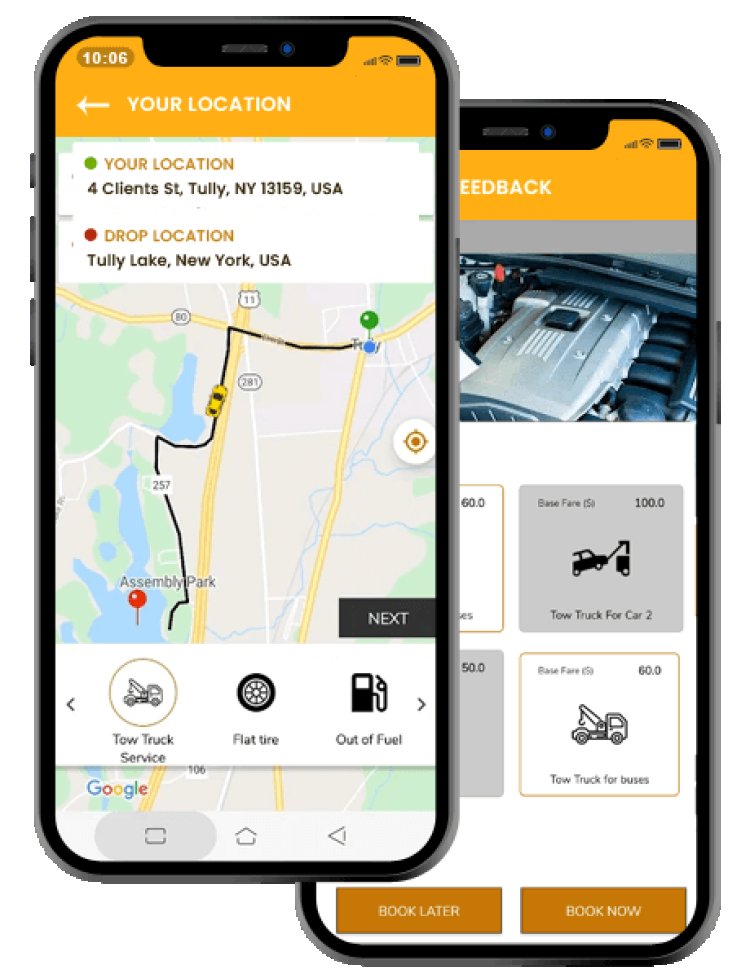Key Challenges and Solutions for Developing a Roadside Assistance App Like Uber
Share this Post to earn Money ( Upto ₹100 per 1000 Views )

The rise of mobile technology has transformed many industries, including roadside assistance. With the success of apps like Uber revolutionizing transportation, there's a growing interest in creating similar platforms for roadside assistance. Developing a roadside assistance app like uber presents unique challenges and opportunities. This article explores the key challenges faced in building such an app and offers solutions to address them effectively.
1. Understanding User Needs and Expectations
Challenge: Roadside assistance apps must cater to a diverse user base with varying needs, such as vehicle breakdowns, flat tires, and fuel delivery. Understanding these needs and ensuring the app meets them can be complex.
Solution: Conduct thorough market research to identify common issues faced by drivers and their preferences for roadside assistance. Surveys, focus groups, and user interviews can provide valuable insights. Implement features that address these needs, such as real-time tracking, estimated arrival times, and multiple assistance options.
2. Developing a Reliable and Scalable Backend Infrastructure
Challenge: An app like Uber requires a robust backend infrastructure to handle real-time data, user requests, and service provider management. Ensuring reliability and scalability is crucial, especially during peak times or high demand.
Solution: Invest in a scalable cloud-based infrastructure that can handle high volumes of traffic and data. Utilize load balancing, caching, and database optimization techniques to ensure smooth performance. Implement a monitoring system to track server health and quickly address any issues.
3. Ensuring Accurate Location Tracking and Navigation
Challenge: Accurate location tracking is essential for roadside assistance apps to connect users with the nearest service providers. Any discrepancies in location data can lead to delays and frustration.
Solution: Integrate with reliable GPS and mapping services, such as Google Maps or Mapbox, to ensure precise location tracking. Implement algorithms to calculate optimal routes and provide real-time updates on the service provider's arrival. Regularly test and update the navigation features to address any potential issues.
4. Building a Comprehensive Service Provider Network
Challenge: Establishing a network of reliable and skilled service providers is critical for the success of a roadside assistance app. Ensuring their availability and quality of service can be challenging.
Solution: Develop a rigorous vetting process for service providers, including background checks, qualifications, and customer reviews. Offer training and support to ensure they meet your app’s standards. Consider partnering with established roadside assistance companies to expand your network and enhance service coverage.
5. Implementing Real-Time Communication and Support
Challenge: Effective communication between users and service providers is essential for coordinating assistance and resolving issues. Ensuring real-time support can be challenging, especially in emergency situations.
Solution: Incorporate real-time messaging and voice call features within the app to facilitate seamless communication. Implement push notifications and alerts to keep users informed about the status of their request. Provide a dedicated support team to handle any issues that arise during the assistance process.
6. Managing Payments and Transactions
Challenge: Handling payments and transactions securely and efficiently is a crucial aspect of a roadside assistance app. Users expect a smooth payment experience without any hassle.
Solution: Integrate with trusted payment gateways to process transactions securely. Offer multiple payment options, such as credit/debit cards, digital wallets, and in-app payments. Ensure compliance with relevant financial regulations and implement robust security measures to protect user data.
7. Designing an Intuitive and User-Friendly Interface
Challenge: The success of a roadside assistance app depends on its usability. An intuitive and user-friendly interface is essential to ensure users can easily navigate the app and request assistance.
Solution: Invest in user experience (UX) and user interface (UI) design to create a clean and intuitive app layout. Conduct usability testing to identify and address any design issues. Implement features such as one-click assistance requests, easy navigation, and clear instructions to enhance the user experience.
8. Addressing Legal and Regulatory Compliance
Challenge: Roadside assistance apps must comply with various legal and regulatory requirements, including insurance, liability, and data protection laws.
Solution: Consult with legal experts to ensure compliance with relevant regulations and industry standards. Implement appropriate insurance coverage for your services and ensure that user data is protected in accordance with data protection laws, such as GDPR or CCPA.
9. Ensuring Service Quality and Customer Satisfaction
Challenge: Maintaining high service quality and customer satisfaction is crucial for the success of a roadside assistance app. Negative experiences can impact your app’s reputation and user retention.
Solution: Implement a feedback and rating system to gather user reviews and assess service quality. Monitor feedback regularly and address any issues promptly. Provide training and support to service providers to ensure they deliver high-quality assistance.
10. Scaling the App for Different Markets
Challenge: Expanding the app to different regions or countries presents challenges related to localization, language support, and regional regulations.
Solution: Develop a scalable app architecture that allows for easy localization and customization. Offer multilingual support and adapt the app’s features to meet regional requirements. Conduct market research and collaborate with local partners to ensure successful expansion into new markets.
Conclusion
Developing a roadside assistance app similar to Uber involves addressing a range of challenges, from understanding user needs to ensuring legal compliance. By implementing effective solutions and strategies, you can create a reliable and user-friendly platform that meets the demands of modern drivers. With careful planning and execution, your roadside assistance app can thrive in a competitive market and provide valuable support to users in their time of need.















